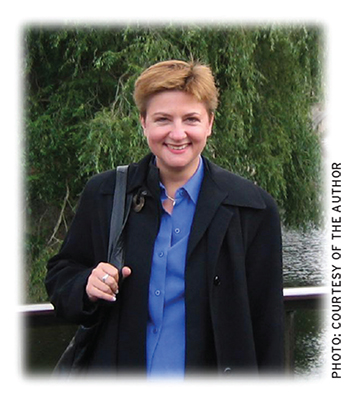Two years ago, the school system in North Rhine Westphalia (NRW), Germany, was suffering from a dearth of qualified teachers. The state created a two-year program in which one could teach a nearly full load at full salary while at the same time earning German certification. It was an offer I could not refuse, having just finished a two-year teaching stint in Dakar, Senegal.
 I taught the usual load minus three hours allotted for attending seminars. I was also expected to mark papers, prepare to teach classes, and observe fellow teachers on a regular basis while concocting elaborate lesson plans for 10 observed teaching visits. I was initially undaunted and looked forward to becoming an expert in my craft.
I taught the usual load minus three hours allotted for attending seminars. I was also expected to mark papers, prepare to teach classes, and observe fellow teachers on a regular basis while concocting elaborate lesson plans for 10 observed teaching visits. I was initially undaunted and looked forward to becoming an expert in my craft.
The first step involved constructing lesson plans, an exact science in NRW, down to the verbs that are permitted when describing pupil progress in the space of a single lesson (“students are able to summarize, to analyze,” etc.). Germans are great fans of the scientific method and enjoy being able to measure and quantify things, a laudable trait. But is it ever possible to prove that all pupils have learned in a given hour what the teacher set out to teach? In this unexpectedly Kafkaesque world, I was stymied as to how one might go about doing this. This led to the first furrow in my brow.
Next we learned the desired lesson format. One should begin each lesson not by asking to see homework but with introductory material, such as a video clip designed to jump-start class discussion. The material should lead the students to state the aim of that day’s lesson themselves, an interesting reversal of those dinosaur days in which the teacher would write the aim on the blackboard. I frequently spent 10 minutes trying to get my students to intuit the question I’d had in mind. Was this really time well spent, I wondered? Furrow number two made its appearance.
Once the question of the day is sorted out, the class discusses how to go about answering it. Students, rather than the teacher, decide whether a debate, role play, mind map, or some other method best suits the topic at hand. Furrow number three was born.
Students then work in groups, jointly preparing their results. I hated group work when I was in school, as I knew who would take responsibility for completing the assignment. Mandatory here, group work is intended to build social skills.
After the presentation phase, members of the class summarize what has been accomplished (“What have we learned today that we didn’t know before?”) and apply the results to an analogous situation, a step referred to as “transfer.”
At this juncture, the teacher may assign a thoughtful homework assignment that encourages in-depth transfer while not overburdening the students. Enter furrow number four.
Despite my confusion about what was expected of me, I looked forward to my first observed teaching visit, in which the class was to compare and contrast speeches by Martin Luther King Jr. and Malcolm X. My students picked out themes and metaphors and persuasive techniques like nobody’s business. At the end of the hour, I floated out of the room, expecting to hear high praise. The wise reader will have a sense of foreboding at this point.
The observer quickly cut to the chase: “So what would you say the students did during this lesson they hadn’t done before?”
“Um,” I stammered. “They read and analyzed speeches by two important civil rights activists.”
“Am I to assume, then, that they were unable to read before?”
“No, of course not.” I regrouped. “They did a close text analysis and compared and contrasted the use of rhetorical devices in the texts.”
“Were the students unfamiliar with such devices before?”
“Well, no, we had previously worked on alliteration, metaphors, and similes,” I admitted meekly.
“So what is it you would say was actually learned by your students in the past hour?”
I stared at him. Technically, applying what one has already learned did not qualify, so I bowed my head in resignation and understood. My students had learned nothing from me. Nothing at all.
Tamara Braunstein is an educator and writer from Brooklyn, New York, who (usually!) embraces intercultural exchange, having taught high school in Senegal and Germany.
This article appeared in the Summer 2013 issue of Education Next. Suggested citation format:
Braunstein, T. (2013). Trial by Format: The fine art of not teaching. Education Next, 13(3), 80.


